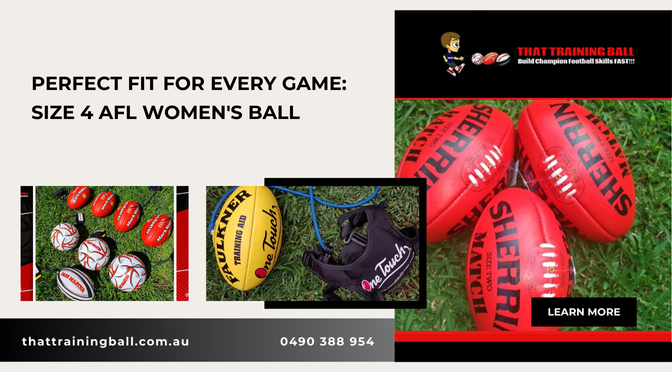One of the most important AFL Training Equipment that you need to avail as AFL trainee is the ball itself. A rugby ball must be the proper quality for the game in addition to being the proper size for you.
Thus, you’ve arrived at the ideal sporting goods store if you want to be sure that you’re picking the best rugby ball for your training. We have them for you!
Choosing the right ball
One of the most crucial things to take into account when selecting a rugby ball is size.
Size 4 adult rugby balls are appropriate for For ages Girls and Ladies 14 to adults and and teenage boys 14 to 16 years use this size ball as well. Rugby balls are categorised based on age.
Quality and Cost
The cost and material quality of the rugby ball are the next crucial factors to take into account. There are several types of balls available, ranging from leather training balls to synthetic balls.
You need to think about whether you need the Size 4 AFL Women’s Ball or some other version. It also needs to fit your playing level and budget and of course your gender.

The Get up
Grip
The outer layer of the ball, or its “pimpled” surface, is textured, and this is what gives players a firm grip on the ball. A ball’s performance is largely dependent on the configuration, form, and depth of its pimples. Rugby balls need to be balanced in order to be easy to grab and to facilitate efficient passing and kicking.
Different kinds of pimples might impact the ball’s durability and grip. While rounder, lower-pitched pimples persist longer but offer less grip, higher-pitched pimples typically offer greater grip but diminish kicking distance. The grip pattern is frequently modified to meet the unique needs of various rugby game formats, such as touch, 7’s, and 15’s rugby.

The Panels
The shape retention, weight, and energy transfer characteristics of a rugby ball are largely determined by the way its panels are constructed. A panel usually consists of several layers, or “plies,” between the bladder and the outer layer, as well as an outer layer with grip and rubber. Training balls are made of a mix of 2- and 3-ply materials, whilst match balls are usually made of three layers.
Long-distance passing and kicking are best done with a 3-ply ball since it will weigh more and be less impacted by wind than a 2-ply ball. Furthermore, a 3-ply ball will typically hold its shape better, when you compare with its 2-ply counterpart.
Bladder
Another essential element that has a significant impact on a rugby ball’s performance is its bladder. Depending on its intended purpose, a ball’s bladder type and size vary. Training and match balls typically have a natural latex bladder with strong rebound properties and outstanding resilience. Natural latex bladders have the drawback of being air permeable, which means that weekly reinflation is probably necessary. Butyl bladders are perfect for mid-to upper-range balls because they provide an excellent mix between feel and air retention.
So these are the most crucial factors that you need to consider when you select an AFL training ball. That Training Ball is one of the best to turn to, since we have the best stock of these balls. Call us to place the order.








